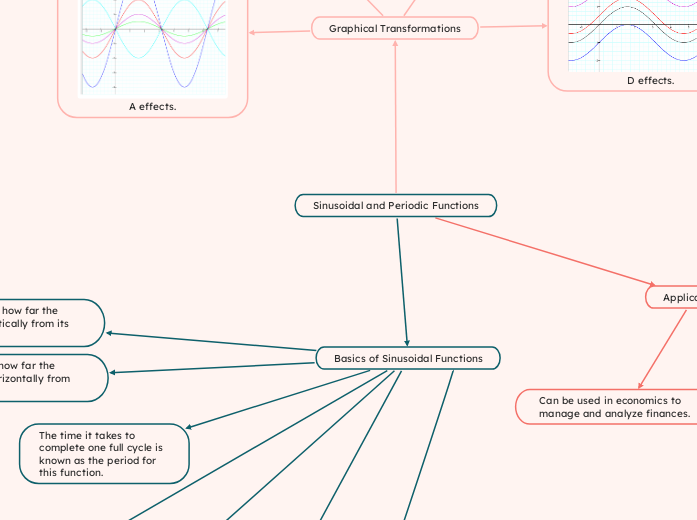Sinusoidal and Periodic Functions
Basics of Sinusoidal Functions
The time it takes to complete one full cycle is known as the period for this function.
The vertical distance from the top peak to the center line is known as the amplitude.
A type of periodic function that is created by transformations of f(x) = sin x. Its based on the sine function.
The vertical shift is how far the function moves vertically from its original spot.
If d > 0, there is a vertical shift of d units up.
If d < 0, there is a vertical shift of d units down.
The phase shift is how far the function moves horizontally from its original spot.
If c > 0, there is a horizontal shift of shift of c units to the right.
If c < 0, there is a horizontal shift of shift of c units to the left.
Sinusoidal functions copy the original wave however many times over again.
Sinusoidal functions are smooth varying meaning there are no sudden changes to amplitude.
Graphical Transformations
A effects.
B effects.
C effects.
D effects.
Applications
Real world examples: sound and light waves, ocean waves, instrument strings vibrating movement of a spring, and heart rate.
Can be used in physics as to describe waves in physics.
Can be used in electrical engineering when working with voltage.
Can be used in economics to manage and analyze finances.
